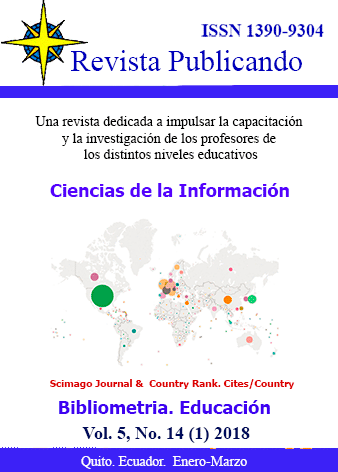Resumen
Dance is a phenomenon associated with motion and movement in every particle of the Universe to fulfill duty in the best way that is to worship God. Among these, Indian classical dances directly, and Iranian Classical dances indirectly have their roots in religion. This literary research takes a comparative look at the history and philosophy of this dance to investigate its common grounds and differences. The common ground is their implied message of mainly religious, philosophical and ethical theme. Their difference is their antiquity. In fact, Indian dance is dated back to B.C. and Iranian dance to the contemporary era.
Referencias
Sofia Diaz, "BHARATA NATYAM: classical Indian Dance: A Hindu Fractal", International Journal of Humanities and Peace 19, no. 1 (2003): 83.
Gina Lalli, “A North Indian Classical Dance Form: Lucknow Kathak”, Journal for the Anthropological Study of Human Movement 12, no. 3 (2003). 100-113.
Sunil Kothari, Kathak, Indian Classical Dance Art (New Delhi: (Abhinav Publications, 1989).
Reginald Massey, India's Dances (New Delhi: Abhinav publications, 2004).
Ragini Devi, Dance Dialects of India (1972; repr., Delhi: Motilal Banarsidass publ, 1990).
Jennifer shorey Arnold," Indian on the move", Dance spirit 7, no. 8 (2003): 50, 52, 54,158.
Phillip B. Zarrilli, Kathakali dance – drama: where gods and demons come to play (Routledge, 1984), chap. 1, http:// site. ebrary. com/ id/ 10100681? ppg= 20.
Phillip B. Zarrilly, The Kathakali Complex (New Delhi: Abhinav Publications, 1984).
Aakriti, Sinha , Let's know Dances of India (New Delhi: Star publications, Pvt. td., 2006).
Shobhna Gupta Dances of India (New Delhi: Har- Anand Publications, 2002).
Sunil Kothari, Avinash pasricha, kuchipudi, (New Delhi: Abhinav publications, 2001).
Uttara Asha Coorlawala," Illustrating kathak", Dance Chronicle 15, no.1 (1992): 88-93, http:// www. tandfonline. com/ page/ terms- and – conditions.
Uttara Asha Coorlawala," The classical Traditions of Odissi and Manipuri", Dance Chronicle 16, no.2 (2008): 269- 276. http://www. tandfonline. com/ page/ terms- and- conditions.
Sandra chatterjee, "Looking at kuchipudi", Dance Chronicle 26, no. 2(2003): 265- 267, http: // www. tandfonline. com/ page/ terms- and- conditions.
Mythili Anoop & Milind Malshe, "Creativity and the code: training in Mohiniattam", Theatre, Dance and performance Training, 2, No. 2 (2011): 138-150, http: // www. tandfonline. com/ page/ terms- and- conditions.
Madhavi Puranam, "Mohiniattam: post- Independence perspective" Indian Horizons 58, no. 3 (2011): 30-40.
Shovana Narayan, the Sterling Book of Indian Classical Dances (2005; repr., New Delhi: sterling Publishers Pvt. Ltd., 2004).
Prerana Deshpande, "Kathak is an expression of the soul", Nartanam 11, no. 3 (2011): 46-51.
Sushil Kumar Saxena, "Towards an Aesthetics of Kathak Dance", Nartanam 4, no.4 (2004): 7-30.
Krishna Chaitanya, "The aesthetics of Kathakail", Nartanam 8, no. 4 (2009): 53-58.
Vempati chinna Satyam, "The Birth and growth of Kuchipudi dance," Nartanam 12, no, 3 (2012): 25-35.
David Dennen, "The third Stream: Odissi Music, Regional Nationalism, and the concept of "Classical, "Asian Music 41, no. 2 (2010): 149- 179, 223, http:// search. Proquest. com.
Janet O'shea, “Traditional Indian Dance and the making of interpretive Dance and the making of interpretive communities”, Asian Theatre Journal 15, no. 1 (1998): 45- 63, http: // Search. Proquest. com.
Meenakshy- Bhaskar Schofield "A Dance Step into Indian Culture", Social Studies Review 45, no. 1 (2005): 16-19, http: // Search. Proquest. com.
Janet O'shea, At Home in the World: Bharata Natyam on the Global Stage (Middletown, Connecticut: Wesleyan University Press, 2007).
Priya Srinivasan, Sweating Saris: Indian dance as transnational labor (Philadelphia: Temple University Press, 2012).
Azardokht Ameri, "Iranian Urban Popular Social Dance and So- Called Classical Dance: A Comparative investigation in the District of Tehran", trans. Anthony Shay, Dance Research Journal 38, no. 1/2 (2006): 163- 179, http:// search. Proquest. com.
Purnima Shah, "Transcending Gender in the performance of Kathak", Dance Research Journal 30, no. 2 (1998): pg.2, http:// search. Proquest. com.
Angela M. Yarber, Embodying the Feminine in the Dances of the world's Religions vol. 1 of Liturgical Studies (New York: Peter Lang publishing, 2011).
Harshitak. Mruthinti," Dancing the Divine Female", Journal of Asian American Studies 9, no. 3 (2006): 271- 299, 338, http:// search. Proquest. com.
Olivia whitmer, "Dancing the Past into the Present: Ruth St. Denis and Bharatanatyam", Journal of Popular Culture 37, no. 3 (2004): 497- 504, http:// search- proquest. com.
Sarah Morelli, "Intergenerational Adoptation in North Indian Kathak Dance", Anthropological Notebooks 16, no.3 (2010): 77- 91, www. doaj. org.
Joélle Célérier- Vitasse," L'Empreinte du Kathakali dans le Dieudes Petits Riens d'Arundhati Roy", E- rea: Revue Electronique d Etudes sur le Monde Anglophone 2, no. 2 (2004): www. doaj. org.
Kedar Mishra, “Commodity vs. Culture: Odissi in the globalized era”, Nartanam XIII, no. 3 (2013): 46-51.
Janet W. Descutner, Asian Dance World of dance (Chelsea: Infobase Publishing, 2010).
Pallabi chakravorty, "Hegemony, Dance and Nation: The Construction of the Classical Dance in India", South Asia: Journal of south Asian Studies 21, no. 2 (2007): 107- 120, http: // www. tandfonline. com/ page/ terms- and- conditions.
Cain Carroll & Revital Carroll, Mudras of India (London: Singing Dragon, 2012).
Yahya Zokai, "Dancing in Prehistory", Music Magazine 79-80 (1965): 1-22, http:// www. Artira. com/ danceforoum/ articles/ Zokai _ raqsdariran. Html.
Kapila Vatsyayan, Dance in Indian Painting (New Delhi: Abhinav publications, 1982).
Usted es libre de:
Compartir — copiar y redistribuir el material en cualquier medio o formato
Adaptar — remezclar, transformar y construir a partir del material
La licenciante no puede revocar estas libertades en tanto usted siga los términos de la licencia
Bajo los siguientes términos:
Atribución — Usted debe dar crédito de manera adecuada, brindar un enlace a la licencia, e indicar si se han realizado cambios. Puede hacerlo en cualquier forma razonable, pero no de forma tal que sugiera que usted o su uso tienen el apoyo de la licenciante.
NoComercial — Usted no puede hacer uso del material con propósitos comerciales.
CompartirIgual — Si remezcla, transforma o crea a partir del material, debe distribuir su contribución bajo la lamisma licencia del original.
